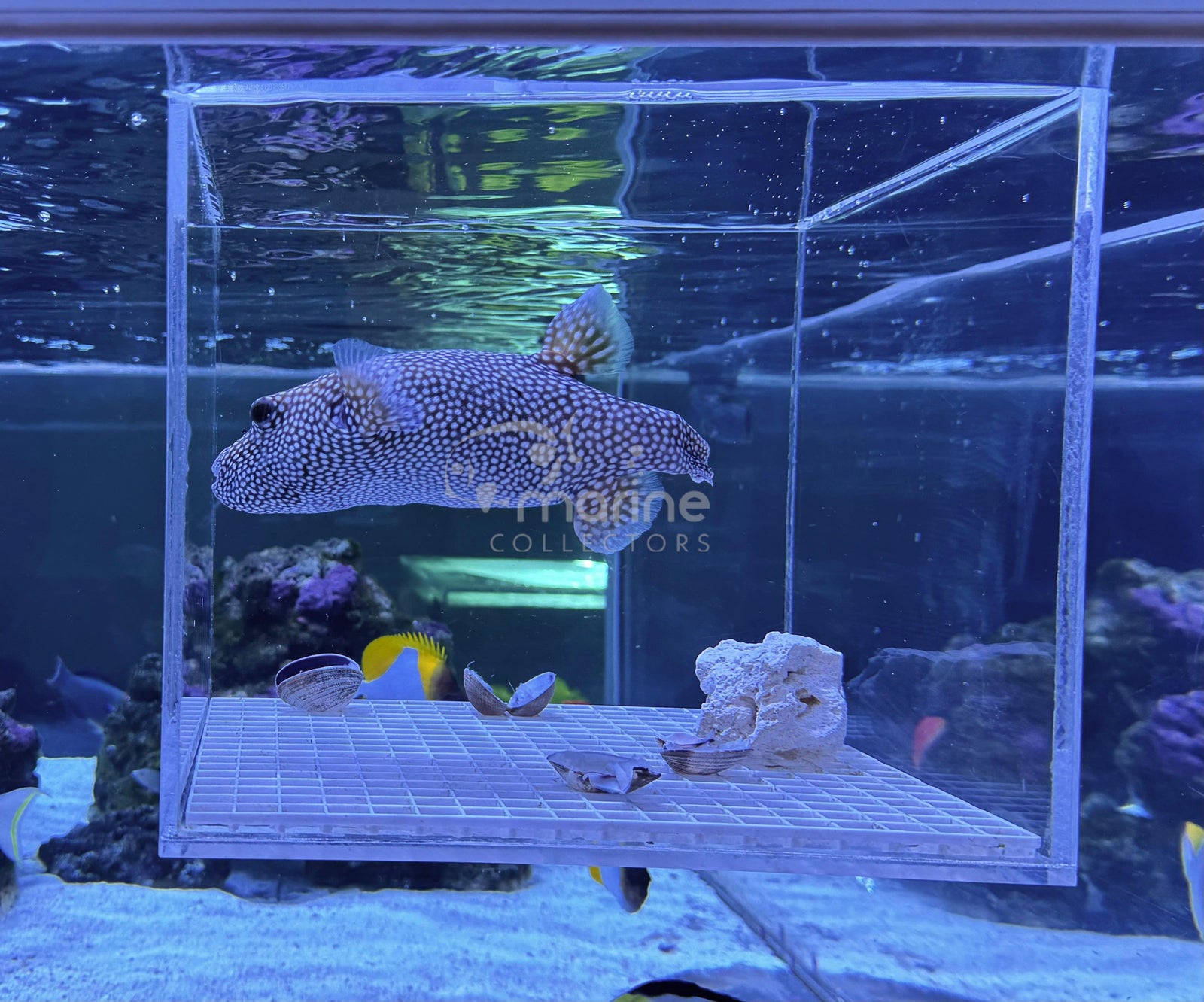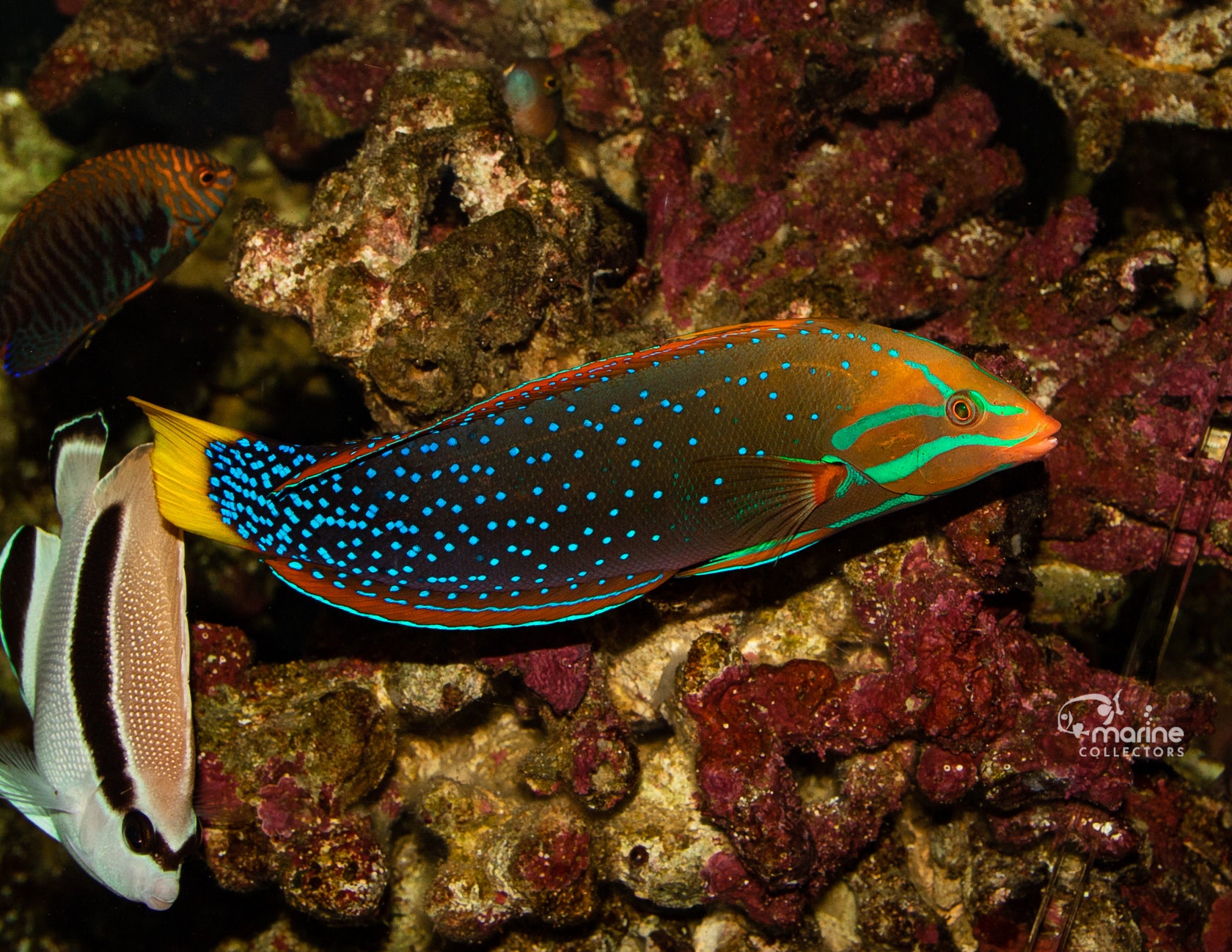It could be argued that the majority of losses that happen shortly after adding a new fish to the tank can be from improper acclimation.
Recovery from shipping, harassment from established tank mates, and inability to compete for food are the headliners.
- Give you our recommended acclimation procedures
- How to best integrate your new fish into your aquarium!
Acclimation:
Acclimation should be the step that you should get right, 100% of the time. Proper acclimation is about getting your fish from the bag water, into your tank water, with as little stress as possible. Matching Temperature, pH, and salinity, while also being conscious of the dramatic changes of chemistry within the sealed bad.
Lets go over the chemical reactions occurring in the bag first. The chemistry inside a bag with a fish changes dramatically over time as a result of various chemical processes and interactions involving pH, carbon dioxide (CO2), and oxygen (O2). It is particularly important to be aware of these changes when transporting live fish as they can directly impact the fish's health. Here are some basic points to summarize:
- Oxygen (O2) - Initially, when a fish is placed in a sealed bag, the oxygen concentration within the bag is relatively high. The fish consumes oxygen through respiration and expels carbon dioxide. As time progresses, the amount of available oxygen in the bag gradually decreases as the fish continues to respirate. Lower oxygen levels can stress the fish and if oxygen depletion continues, it will cause hypoxia.
- Carbon Dioxide (CO2) - Conversely, carbon dioxide levels within the bag increase over time. Fish release carbon dioxide as a metabolic waste product. As the fish’s metabolism continues, the concentration of carbon dioxide within the bag rises, leading to a decrease in the pH of the water. A lower pH causes the water to become more acidic.
- pH changes: The pH of the water in the bag gradually decreases as a result of the rising carbon dioxide levels. As carbon dioxide dissolves in the water, it forms carbonic acid which lowers the ph. Additionally, fish secret ammonia both through waste and respiration. In an acidic environment, ammonia is less toxic. This information is crucial, when the bag is open and no longer remains sealed and the pH of the bag water wants to increase as it reacts with the surrounding air. It’s important to know that the ammonia will become exponentially more toxic as soon as this happens.
Now that we know the properties of the water within the bag. We can more appropriately come up with a protocol that allows us to address all these issues.
1. Let's start with temperature first.
This one's easy. Floating the sealed bag with the fish for 30 or 40 minutes in its intended tank, will acclimate the fish to the proper temperature of the tank they will go into. For fish that have been in extended transit, maybe a shipping delay, we would recommend allowing this fish to sit in the bag for a few hours. Reason being, is to allow one change of the water's property to happen and then allow the fish to adjust to those changes before moving on to the next.
2. Next let's address the pH and ammonia.
This is the important one. We know that the pH will naturally increase from reacting with the surrounding air as soon as we open the bag. Because of this, we need to figure out a way to address the issue with ammonia. Any reputable vendor should not be shipping their fish in water that possesses copper. Almost all ammonia blockers, Seachem Prime for example, cannot be combined with copper as it will only add to more toxicity to the water. Ideally the vendor that you choose to purchase fish from, will have an ammonia blocker already present in their packing water. As soon as we open the bag, add an ammonia blocker. The bag can then be poured into a bucket. Once in the bucket. we can perform at drip acclimation. A piece of air line tubing, loosely restricted, or even at a full siphon, is all you will need. An airstone can be added, but for sensitive fish, it is almost better not to add this as it will cause the ph to change faster than desired. It is important to know that drip acclimation should never take an exceedingly long amount of time. 30 to 40 minutes is usually adequate. Within this time frame, the water volume in the bucket should triple(at this rate of adding water, you will not need an airstone). Once this step has been completed your fish are ready to go into your aquarium.
Adding the fish:
When adding the fish to your aquarium. gently grabbing the fish with your bare hands or a cup is often better than using a net. Nets can be abrasive and damage of fishes important slime coat. Keep the tank lights off and add the fish to an isolation box. Keeping the lights off will allow the fish to rest and recover after transit in a less stressful environment. An isolation or Acclimation box is a critical step to ensure that your fish has the best chance to adjust to your aquarium seamlessly.
The importance of an Acclimation Box:
An acclimation box will make the difference between mortality and longevity in most new additions. The idea is to give the fish a space to allow recovery from shipping, where they will not be harassed from established tank mates, and given the opportunity to re-develop a strong feeding response before having to compete with established fish.
An acclimation box, or rather an isolation box, should be large enough to house your new fish for a couple weeks to a month. When receiving new fish, it is a useful tool as it will allow new additions to be isolated in their own space. This will prevent harassment from other tankmates, keep them from potentially wander into pumps, or even jumping. The design of an isolation box should be one that does not have a ton of small holes. often this design allows for fish to injure themselves. as fish run the glass they may damage their mouths or a scrape their sides with a cheese grater effect. two large holes is a better design that will allow for adequate water Exchange with limited number of injury points.
Additional, It has the added benefit of visual acclimation to potentially aggressive tank mates. oftentimes fish perish from constant harassment when they are already tired from shipping and handling. Similarly new additions may also be timid with feeding initially a box like this will allow new additions to be separated with food and given the opportunity to feed while still acclimating to the tanks conditions without the pressure of having to compete with established tank mates.
Anytime a new fish is added, an isolation box should always be used as part of standard practice.
Hopefully you found this information useful!
Happy fishkeeping!
- Elliot Lim


